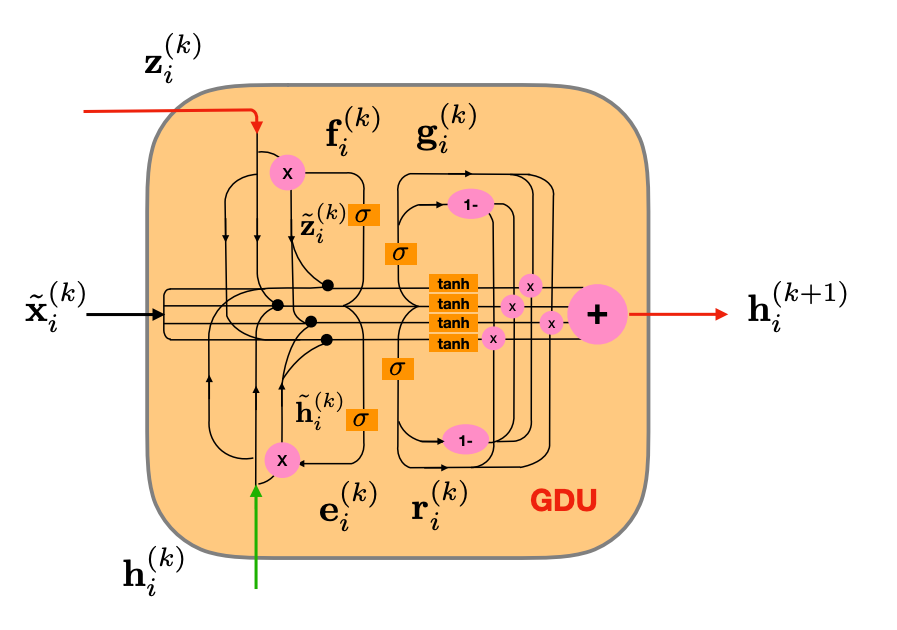Get Rid of Suspended Animation Problem: Deep Diffusive Neural Network on Graph Semi-Supervised Classification
Source code of "Get Rid of Suspended Animation Problem: Deep Diffusive Neural Network on Graph Semi-Supervised Classification".
Paper arXiv URL: https://arxiv.org/abs/2001.07922
(1) FAKEDETECTOR: Effective Fake News Detection with Deep Diffusive Neural Network https://arxiv.org/abs/1805.08751
(2) Graph Neural Lasso for Dynamic Network Regression https://arxiv.org/abs/1907.11114
The latest graph neural network models proposed by IFM Lab can be found via the following link
IFM Lab GNNs: https://github.com/jwzhanggy/IFMLab_GNN
@article{Zhang2020GetRO,
title={Get Rid of Suspended Animation Problem: Deep Diffusive Neural Network on Graph Semi-Supervised Classification},
author={Jiawei Zhang},
journal={ArXiv},
year={2020},
volume={abs/2001.07922}
}
After downloading the code, you can run
python3 script.py
directly for node classification on Cora dataset.
You can change the "if 0" to "if 1" to turn on a script block, and the reverse to turn off a script block.
(1) pytorch (https://anaconda.org/pytorch/pytorch) (2) sklearn (https://anaconda.org/anaconda/scikit-learn) (3) transformers (https://anaconda.org/conda-forge/transformers)
A simpler template of the code is also available at http://www.ifmlab.org/files/template/IFM_Lab_Program_Template_Python3.zip
(1) data.py (for data loading and basic data organization operators, defines abstract method load() )
(2) method.py (for complex operations on the data, defines abstract method run() )
(3) result.py (for saving/loading results from files, defines abstract method load() and save() )
(4) evaluate.py (for result evaluation, defines abstract method evaluate() )
(5) setting.py (for experiment settings, defines abstract method load_run_save_evaluate() )
The base class of these five parts are defined in ./code/base_class/, they are all abstract class defining the templates and architecture of the code.
The inherited class are provided in ./code, which inherit from the base classes, implement the abstract methonds.
(1) DatasetLoader.py (for dataset loading)
(1) cellGDU.py (defines the GDU neuron, we also include several simplified version of GDU in this class)
(2) MethodDifNet.py (the DifNet model for node classification)
(1) ResultSaving.py (for saving results to file)
(1) EvaluateAcc.py (accuracy metric)
(1) Settings.py (defines the interactions and data exchange among the above classes)
In ./code/cellGDU.py , we provide the implementation of several different versions of GDU.
(1) gdu_type == 'original': the GDU introduced in the paper. It introduces two neural gates f and e for state updating, and two other neural gates g and r for output selection.
(2) gdu_type == 'short_gate': a simplified version of GDU. It also uses the same number of gates for state updating and output selection. The main simplification is on the output, which selects output about h and z, whereas x is a fixed output.
(3) gdu_type == 'single_gate': a simplified version of GDU. It uses two neural gates f and e for state updating, but only uses one single gate for output selection. It is also introduced in the paper as a simplified version of GDU.
(4) gdu_type == 'recombine': a simplified version of GDU. It further simplify the "short_gate" GDU in the output to be selected.

